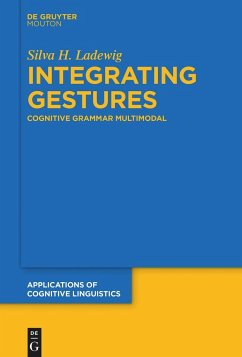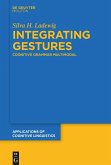Gestures are now viewed as an integral part of spoken language. But little attention has been paid to the recipients' cognitive processes of integrating both gesture and speech. How do people understand a speaker's gestures when inserted into gaps in the flow of speech? What cognitive-semiotic mechanisms allow this integration to occur? And what linguistic and gestural properties do people draw on when construing multimodal meaning? This book offers answers by investigating multimodal utterances in which speech is replaced by gestures. Through fine-grained cognitive-linguistic and cognitive-semiotic analyses of multimodal utterances combined with naturalistic perception experiments, six chapters explore gestures' potential to realize grammatical notions of nouns and verbs and to integrate with speech by merging into multimodal syntactic constructions. Analyses of speech-replacing gestures and a range of related phenomena compel us to consider gestures as well as spoken and signedlanguage as manifestations of the same conceptual system. An overarching framework is proposed for studying these different modalities together - a multimodal cognitive grammar.








